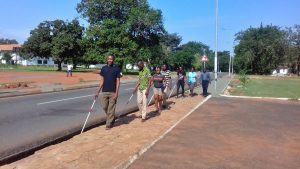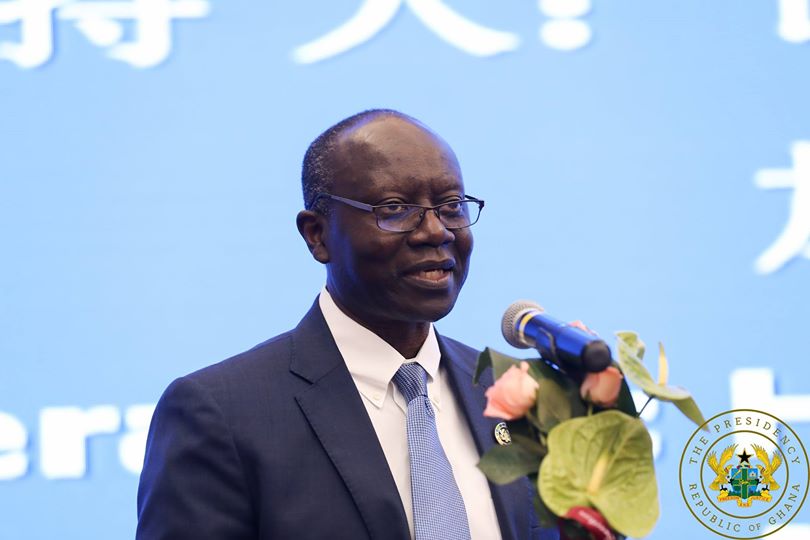The presence of the novel coronavirus (Covid-19) in Ghana has led to the implementation of some measures that seeks predominantly to stop the spread of the disease whose cure has not been found yet.
One of the first measures the country has taken is to place a ban on public gathering even after the lockdown measures have been lifted in Ghana after about 3 weeks. This ban has since meant that schools come to a halt as they fell under the category of “public gatherings”.
To help get things going in terms of teaching and learning, many, including schools, corporate bodies and even churches have even had to resort to online platforms to continue with their activities. On the path of the schools, lectures, Interim assessments and other important academic activities have had to be done online. Student and student groups have raised concerns on the matter concerning modalities rolled out to aid studying online. Many have raised issues ranging from network challenges to cost of data and a host of others.
Whiles all these are at play, how do students with visual impairment deal with these modalities laid out for full time online teaching and learning?

In Ghana, there are quite a number of visually impaired students enrolled into higher education especially with the case of the premier university in the country; University of Ghana, Legon.
The school has quite a number of visually impaired students who are offering courses in the various fields of study. They have been able to study over the years with the aid braille although some have also been quite accustomed to the use of mobile devices and technologies.
The braille is such a system that aids the visually impaired to read using their sense of feel through the fingers to decode the raised dots on sheets that helps them identify letters. With such features not available on mobile phone screens, we find out how these students are able to cope with teaching and learning online.
ghanaquest.com set itself on a quest to hear from these students and how they are coping with the new teaching and learning arrangements. Speaking with some visually impaired students, this has been the outcome.
Read Also: SAY NO TO DRUGS : Crack drugs destroys Amanda, in just 4 months.
Technology has come in handy at such time as visually impaired students have been able to are able to use online platforms to learn. These platforms make it easy for them to use their mobile devices. Interacting with some of these students, it was such that some sent voice notes most often than those of texts. Additionally, you could hear in the background voice prompts that helps them locate the buttons on the screen; the words “send button” and other such prompts kept on repeating.
Sharing how a normal day’s use of mobile devices is, a student details the use of the “Talk back” technology which helps them use mobile devices in the teaching and learning process. It basically reads what’s on the screen for the students to follow. It guides you by telling the letters you are touching.
Explaining the nature of visually impaired students, one of the students explains “All the Special need students on campus are more than 100. That’s what I can say because the number is not actually well known but we are rest assured that they are more than 100. All the special needs students”. The student goes on to add “but mind you, some of them are special needs students but they’ve not reported as such. A lot of people are wearing glasses, if they remove their glasses, they can’t even see beyond 100 meters…so if you want to count the actual people on campus that have special needs, you will not get the exact number” he said. The reason for this according to students is the stigma that comes with being recognized as a student with special needs.
But how do the students cope with this new turn?
According to the students, majority of the students use the brail to read and write. Students normally write tests using laptops they read and/or listen to. A process which is quite difficult.
“Special needs students have a way they write their exams. It is not like the way you people [referring to students who can see clearly] can read through and skim and quickly write. They need to read and listen to it. Using the laptop for that one is even difficult” a student shared.
Read :Ghana Armed Forces Builds COVID-19 Isolation Centre At Kwabenya
This makes the online process of teaching and learning quite new for the students. Most of them are not very familiar with the use of internet resources. Those born with the impairment are deeply affected. “Those who know how to use are very few. Very very few. Not more than 10 people know how to use the internet” the student further explained.
The students also mentions some problems they have been facing to us. These include those that are peculiar to them (some mentioned already) and those that affect them just like all other students.
One key issue of slow internet, problems with the platforms used by the school (University of Ghana’s Sakai especially) and others.
A student shared; “Accessing the school website, I also find it difficult because whiles you are in the house, we do assignments on the school website. Then I also find it difficult to access it and submit it. So what I do is that, I call a friend of mine to type it for me. So I make a phone call whiles the friend will be typing on the school’s website to submit the assignment for me”.
Read Also: Full Address: President Akufo-Addo updates Ghana on Covid-19
Another student shares “It hasn’t been easy since the system is challenging and not familiar to us. The interface of the MIS Web students use have been changed. So now, when you open the MIS Web and you want something from the student’s summarized statement of accounts, It will come as an image which for now we don’t have an application that translates images for us to read. Our voice apps only read texts”. The student goes on to add that the online the number of students that log onto the platforms also cause the system to slow down sometimes.
The presentations that teachers send in powerpoint also turns out a problem because they have pictures in them which cannot be read. There are also issues of poor network connections. A students reiterates “you see, the Vodafone network here is very slow”. The more students complain of slow network.
It turns out that these platforms have not been made compatible to make easy its use by blind students. The more there could be more students suffering that we might think.




















